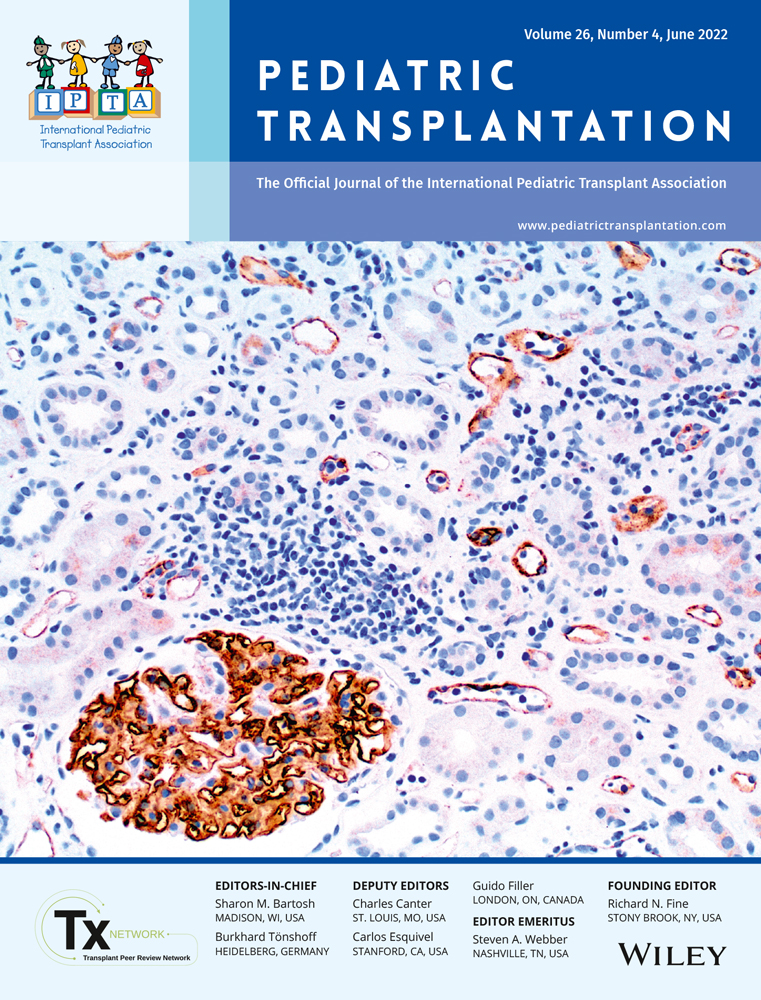A case of treatment-resistant membranous nephropathy associated with graft versus host disease successfully treated with daratumumab
Abstract
Background
Membranous nephropathy (MN) is the most common cause of glomerulopathy after hematopoietic cell transplantation (HCT), most often occurring in the setting of graft versus host disease (GVHD). Twenty percent of patients will fail to respond to standard therapy and may progress to end stage renal disease. Here we present the case of a pediatric patient who developed chronic oral GVHD more than one-year post-HCT, who subsequently developed nephrotic syndrome (anasarca, nephrotic range proteinuria, hypoalbuminemia) and had a renal biopsy consistent with MN. Treated with ibrutinib for her GVHD, and steroids, tacrolimus, and rituximab for her MN, she failed to achieve even partial remission of her kidney disease after 8 months. Due to steroid toxicity and 0% CD19 cells on lymphocyte subpopulation flow cytometry, the decision was made to trial plasma cell depletion therapy with daratumumab.
Method
She received three doses of daratumumab at weeks 1, 4, and 17.
Results
Her nephrotic syndrome resolved and her serum albumin was greater than 3.0 gm/dl by week 10. She was weaned off of both steroids and tacrolimus by week 16, at which time she had near-complete remission of her renal disease.
Conclusion
Daratumumab may be an important, novel therapeutic option for post-HCT MN patients who are not responsive to standard therapies.
Open Research
DATA AVAILABILITY STATEMENT
There is no data, as this is a case report.




